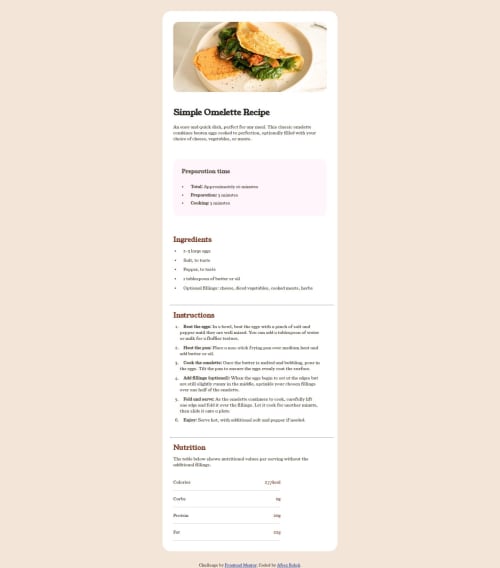Submitted over 1 year agoA solution to the Recipe page challenge
Responsive Recipe Main Page
@Afeez-Ola

Solution retrospective
What challenges did you encounter, and how did you overcome them?
Making the page responsive
What specific areas of your project would you like help with?Responsiveness, but I'll get the hang of it.
Code
Loading...
Please log in to post a comment
Log in with GitHubCommunity feedback
No feedback yet. Be the first to give feedback on Afeez Bolaji's solution.
Join our Discord community
Join thousands of Frontend Mentor community members taking the challenges, sharing resources, helping each other, and chatting about all things front-end!
Join our Discord